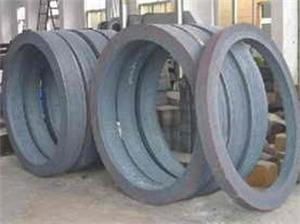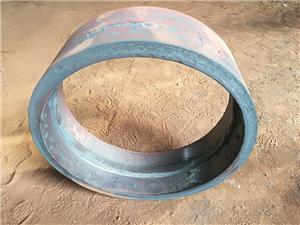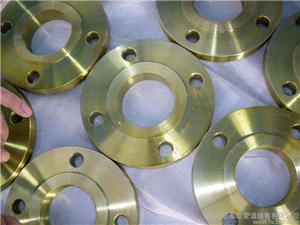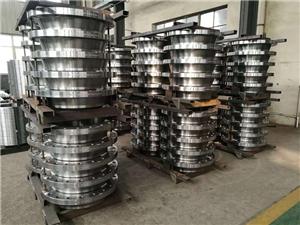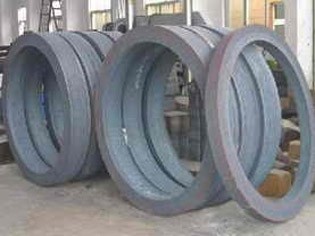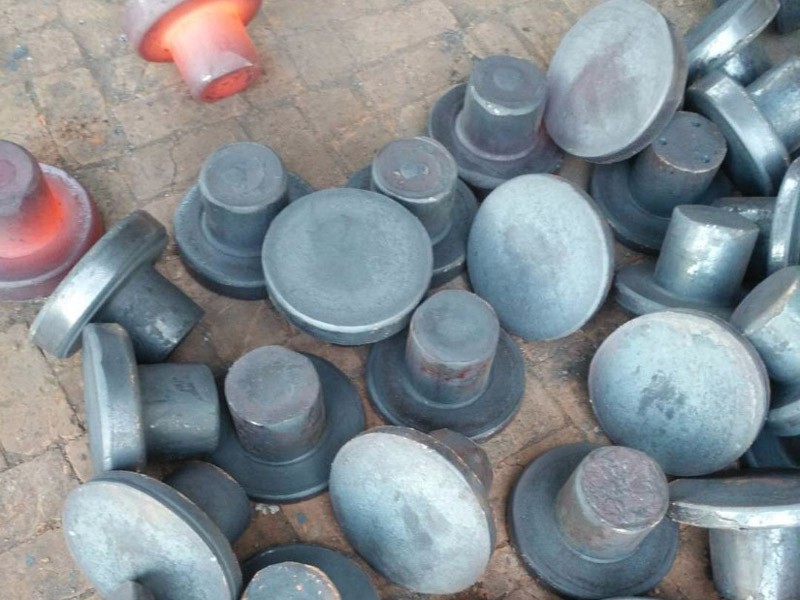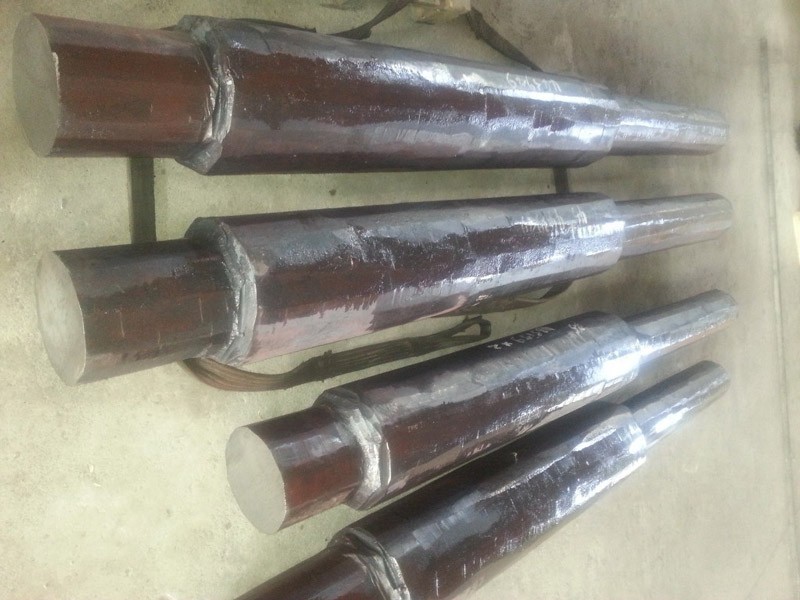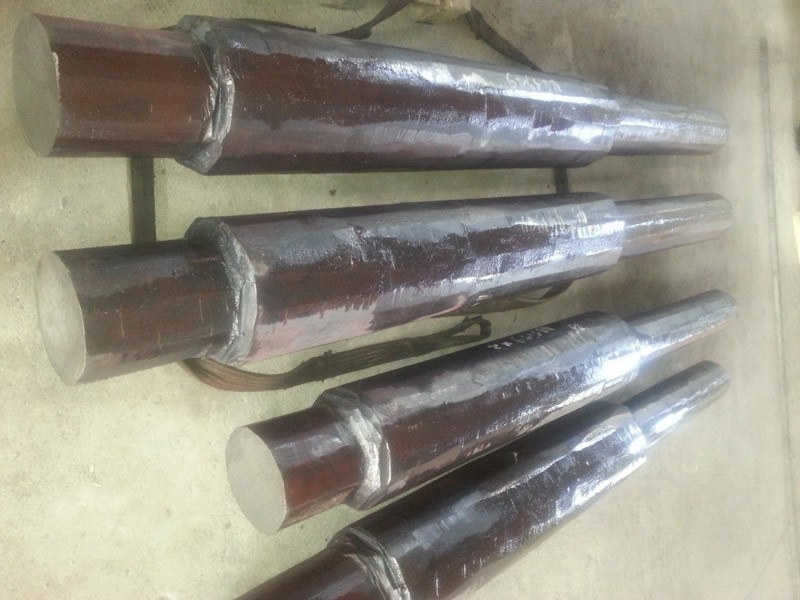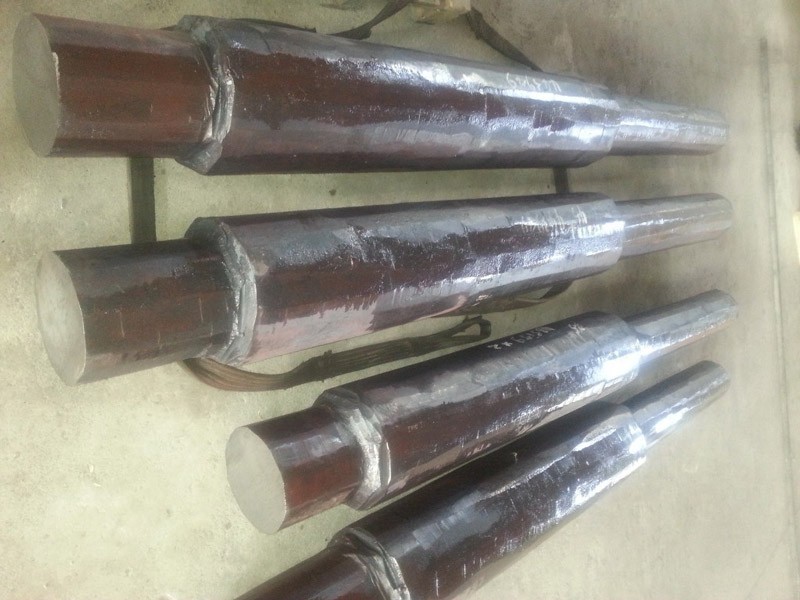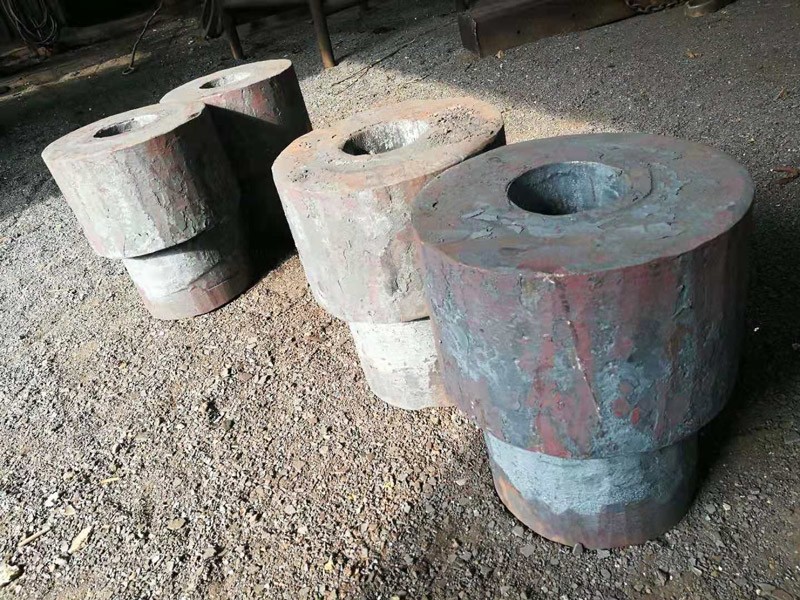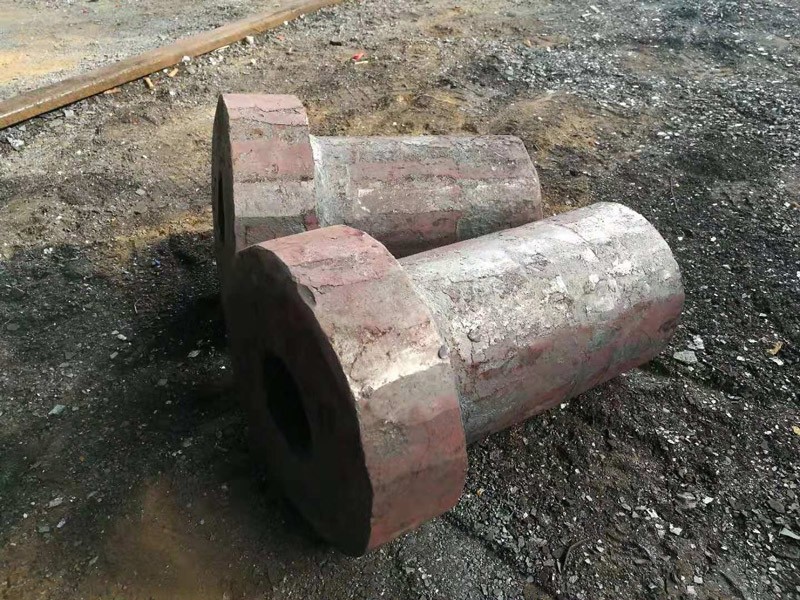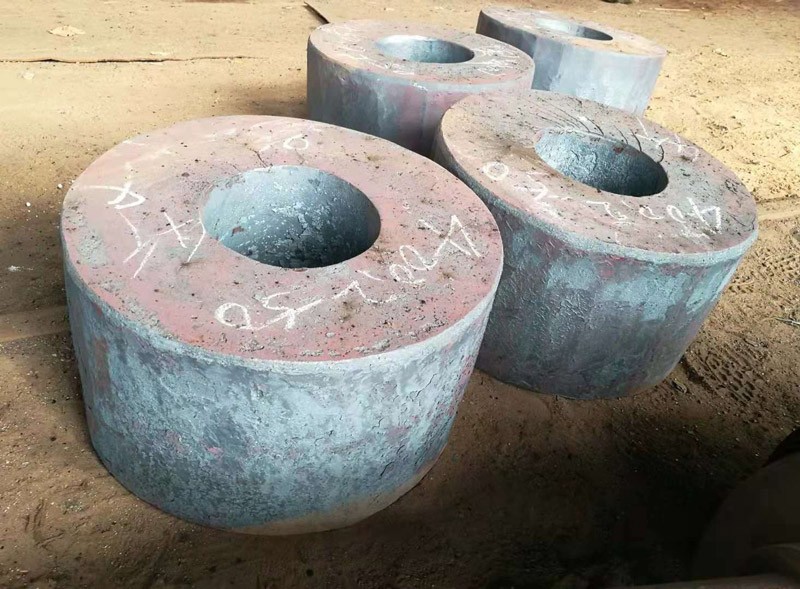-
Hot
Ring Forging
1.Ring forging is a type of forging process used in the industrial sector.
Send Email Details
2.By applying external forces, ring forging creates fine grain structures and improves metal properties.
3.The process of ring forging eliminates porosity and holes, enhancing the mechanical properties of the metal. -
Alloy Steel Forgings
alloy steel forgings
Send Email Details
Alloy steel forgings, steel in addition to iron, carbon, add other alloying elements, called alloy steel.An iron - carbon alloy formed by adding one or more alloying elements to common carbon steel.According to the different added elements, and take appropriate processing technology, can obtain high strength, high toughness, wear resistance, corrosion resistance, resistance to low temperature, high temperature, non-magnetic and other special properties.
There are many kinds of alloy steel forgings, which are usually divided into low alloy steel, medium alloy steel and high alloy steel according to the content of alloy elements.According to the quality of high quality alloy steel, special alloy steel;According to the characteristics and applications are divided into alloy structural steel, stainless steel, acid resistant steel, wear resistant steel, heat resistant steel, alloy tool steel, rolling bearing steel, alloy spring steel and special performance steel (such as soft magnetic steel, permanent magnetic steel, non-magnetic steel).
Alloy steel forgings are generally smelting in the electric furnace can be divided into 8 categories according to the use of alloy steel, they are: alloy structure steel, spring steel, bearing steel, alloy tool steel, high-speed tool steel, stainless steel, heat resistant non-scratch steel, electrical steel.
Tempered steel 1.Medium carbon alloy steel with low content of alloying elements;2.High strength;3.Used for high temperature bolt, nut material, etc.
Spring steel 1. Higher carbon content than tempered steel;2. After conditioning treatment, the strength is higher and the anti-fatigue strength is higher;3 for spring materials.
Rolling bearing steel 1 high carbon alloy steel with high alloy content;High and uniform hardness and wear resistance;3 for rolling bearing.
High carbon alloy steel with low content of alloying elements;2 with high hardness and wear resistance, good machining performance, good stability;Used for measuring material.
Special performance steel stainless steel 1 low carbon high alloy steel;2. Good corrosion resistance;3 for corrosion resistance, part can be made of heat resistant materials.
Heat resisting steel 1 low carbon high alloy steel;2 good heat resistance;Used for heat resistant materials, part can be made corrosion resistant materials.
Low temperature steel 1 low carbon alloy steel, there are high and low alloy elements according to the degree of low temperature resistance;2. Good resistance to low temperature;Used for low temperature material (special steel is nickel steel).
Alloy steel forgings are widely used in a variety of electric furnace manufacturing, metal products heat treatment equipment, major steel mills, aluminum plants, metallurgy, petrochemical, glass, ceramics, enamel, textile, household appliances, electronic appliances, industrial appliances, food machinery, manufacturing, automobile manufacturing, and other manufacturing industries. -
Shaft Forging
shaft forgings
Send Email Details
I. product introduction
Shaft forgings are cylindrical objects inserted between bearings or wheels or gears, but some are square. Shaft forgings are mechanical parts that support rotating parts and turn with them to transfer motion, torque, or bending moment. It is usually a round metal rod with different diameters. The rotating parts of the machine are mounted on the shaft forgings.
Ii. Product parameters
1) dimensional accuracy the dimensional accuracy of shaft parts mainly refers to the dimensional accuracy of shaft diameter and shaft length. According to the requirements of use, the diameter accuracy of the main journal is usually it6-it9, and the precision journal can be up to IT5. The dimension of shaft length is usually specified as nominal dimension, and the length of each step of step shaft can be given a tolerance according to the requirements of use.
2) geometric precision shaft parts are generally supported on the bearing by two journal, which are called support journal and also the assembly datum of the shaft. In addition to the dimensional accuracy, the geometric accuracy (roundness, cylindricity) of the support journal is generally required. For the general precision of the shaft neck, the geometric shape error should be limited to the diameter tolerance range, when the requirements are high, the allowable tolerance value should be specified separately on the part drawing.
3) accuracy of mutual position matching journal of shaft parts (the journal for assembling transmission parts) relative to the coaxiality of the support journal is a universal requirement for accuracy of mutual position. In general, the radial circular runout of the shaft neck with the matching precision is 0.01-0.03mm, and the high-precision shaft is 0.001-0.005mm.
In addition, the mutual position accuracy has the coaxiality of the inner and outer cylinder, the perpendicularity of the axial positioning end face and the axis line. 2, surface roughness according to the precision of the machine, the high and low running speed, shaft parts surface roughness requirements are not the same. In general, the surface roughness Ra of the support journal is 0.63-0.16 microns. The surface roughness Ra of the matched shaft neck is 2.5-0.63 mu
Iii. Product advantages
Shaft, sleeve and disk parts are typical parts with cylindrical surface. The common machining methods for the outer surface include turning, grinding and various finishing machining methods. Turning is the most economical and effective machining method for outer circular surface, but in terms of its economic accuracy, it is generally suitable for rough machining and semi-finishing machining of outer circular surface. Grinding is the main finishing method of the outer surface, especially suitable for all kinds of parts with high hardness and quenching. Finishing machining is an ultra-precision machining method after finishing (such as rolling, polishing, grinding, etc.), which is suitable for some parts with high precision and surface quality requirements. Due to various processing methods can achieve economic processing accuracy, surface roughness, productivity and production cost are not the same, so must according to the specific situation, choose a reasonable processing method, so as to process qualified parts to meet the requirements of the parts drawings. -
Square Shaft Forging
Square shaft forgings
Send Email Details
Introduce the product
Square shaft forgings are cylindrical objects worn between bearings or wheels or gears, but a few are square.The material of the shaft is mainly carbon steel or alloy steel, but also ductile iron or alloy iron.The working capacity of the square axis generally depends on the strength and stiffness.
Product advantage
The common machining methods of square shaft forging shaft surface include turning, grinding and various finishing methods.Turning machining is the most economical and effective machining method for cylindrical surface, but in terms of its economic precision, it is generally suitable for rough machining and semi-finishing machining methods for cylindrical surface.Grinding is the main finishing method of the surface of the outer circle. It is especially suitable for the finishing of various parts with high hardness and quenching.Finishing machining is a super precision machining method (such as rolling, polishing, grinding, etc.) after finishing, which is suitable for some parts with high precision and surface quality requirements.As a result of various processing methods can achieve the economic processing accuracy, surface roughness, productivity and production costs are not the same, so must be based on the specific situation, choose a reasonable processing method, so as to meet the requirements of the parts on the drawings of qualified parts. -
Gear Shaft Forgings
Gear shaft forgings
Send Email Details
I. product introduction
A gear shaft forging is a mechanical part that supports a rotating part and turns with it to transmit motion, torque, or bending moment. It is usually a round metal rod with different diameters. The rotating parts of the machine are mounted on the shaft. Gear shaft forging is the shaft and gear synthesis of a whole, but, in the design, or to shorten the length of the shaft, too long is not conducive to hobbing machine processing, the second is the support of the shaft is too long to lead to the shaft to be thick and increase the mechanical strength (such as rigidity, deflection, bending, etc.).
Ii. Product parameters
Iii. Product advantages
In the process of gear shaft forging, the selection of positioning reference should be considered as follows: at the beginning, the outer circle should be used as the center hole of the end face of the rough reference to prepare positioning reference for the rough car; The rough turning outer circle is the positioning reference for the subsequent processing: after that, in order to prepare the positioning reference for the semi-finishing and finishing outer circle, the center hole before and after processing is used as the positioning reference. Gear shaft forgings also use the center hole as the positioning reference, which is a very good embodiment of the principle of unity of reference, also fully embodies the principle of coincidence of reference.
In the whole process of shaft machining, enough heat treatment procedures should be arranged to ensure the mechanical properties of gear shaft and machining accuracy requirements, and improve the workpiece processing properties.
In general, normalizing treatment is arranged first after shaft blank forging to eliminate the internal stress of forging, refine the grain and improve the cut -
Step Shaft Forging
step shaft forging
Send Email Details
Introduce the product
Step shaft forging is a kind of shaft forging.The stepped bushing is particularly suitable for precision bearing configurations, offering lower runout and higher accuracy than threaded lock nuts.
Step shaft forging sleeve is usually used for ultra-high speed spindles for which conventional locking devices cannot provide sufficient precision.
Step shaft forgings - shaft forgings with shoulder made up of different outside diameters.
Product advantage
Ladder shaft forging is a kind of wide application of forgings, such as axial plus has good processability, m any porosity in the practical application, and no other flaws, thus not only has good appearance, with fine, here is how to introduce you to conform to the requirements of axial forgings to be popular.
1. High intensity
Ladder shaft forgings during processing, its claim to have high accuracy, can not have any flaws, manufactured by forging processing method of this kind of shaft parts, its strength and weight have a higher ratio, its strength is very high, can well ensure shaft parts in the long-term use can resist friction for a long time.
Ii. Exquisite appearance
Popular and respected axial forgings, must have enough quality and appearance, so there is a need for shaft parts has beautiful shape, the characteristics of its in processing link, also need to surface treatment, on the one hand, in order to improve its performance, on the one hand is to improve the appearance of fine degrees.
3. Good physical properties
Step shaft forging is made by applying a certain amount of pressure, and then through plastic deformation, it has built a very delicate particle structure in the process of forging, so the physical properties of shaft parts have been greatly improved, so that it can have excellent physical properties in practical applications.
Axial forging is a kind of wide application of forgings, such as axial plus has good processability, m any porosity in practice, there is no other flaws, thus not only has good appearance, with fine, here is how to introduce you to conform to the requirements of axial forgings to be popular.
There are many kinds of materials for gear shaft forging. Common materials for gear forging are: 40Cr, 42CrMo, 20CrMnMo, 20CrMnTi, etc
Step shaft forging materials to meet the requirements of working conditions.The requirement of working conditions is to choose the gear forgings materials should consider the factors first, alloy steels are often used to make high-speed, overloading and work under impact load of the gear forgings, such as gear for aircraft, to meet the quality small and transmitted power and high reliability requirement, so we must choose the alloy steel with high mechanical properties, such as gear size as small as possible, should be used in surface hardening treatment of high strength alloy steel. -
Hollow Shaft Forgings
Introduce the product
Send Email Details
Hollow Shaft Forgings is a kind of shaft forging.The stepped bushing is particularly suitable for precision bearing configurations, offering lower runout and higher accuracy than threaded lock nuts.
Step shaft forging sleeve is usually used for ultra-high speed spindles for which conventional locking devices cannot provide sufficient precision.
Hollow Shaft Forgings - shaft forgings with shoulder made up of different outside diameters.
Product advantage
Ladder shaft forging is a kind of wide application of forgings, such as axial plus has good processability, m any porosity in the practical application, and no other flaws, thus not only has good appearance, with fine, here is how to introduce you to conform to the requirements of axial forgings to be popular.
1. High intensity
Ladder shaft forgings during processing, its claim to have high accuracy, can not have any flaws, manufactured by forging processing method of this kind of shaft parts, its strength and weight have a higher ratio, its strength is very high, can well ensure shaft parts in the long-term use can resist friction for a long time.
Ii. Exquisite appearance
Popular and respected axial forgings, must have enough quality and appearance, so there is a need for shaft parts has beautiful shape, the characteristics of its in processing link, also need to surface treatment, on the one hand, in order to improve its performance, on the one hand is to improve the appearance of fine degrees.
3. Good physical properties
Hollow Shaft Forgings is made by applying a certain amount of pressure, and then through plastic deformation, it has built a very delicate particle structure in the process of forging, so the physical properties of shaft parts have been greatly improved, so that it can have excellent physical properties in practical applications.
Axial forging is a kind of wide application of forgings, such as axial plus has good processability, m any porosity in practice, there is no other flaws, thus not only has good appearance, with fine, here is how to introduce you to conform to the requirements of axial forgings to be popular.
There are many kinds of materials for gear shaft forging. Common materials for gear forging are: 40Cr, 42CrMo, 20CrMnMo, 20CrMnTi, etc
Hollow Shaft Forgings materials to meet the requirements of working conditions.The requirement of working conditions is to choose the gear forgings materials should consider the factors first, alloy steels are often used to make high-speed, overloading and work under impact load of the gear forgings, such as gear for aircraft, to meet the quality small and transmitted power and high reliability requirement, so we must choose the alloy steel with high mechanical properties, such as gear size as small as possible, should be used in surface hardening treatment of high strength alloy steel. -
Couplings Forgings
Eg: forging of coupling
Send Email Details
Introduce the product
Coupling is a commonly used component in mechanical products, used to connect two axes or shaft and rotating parts, and in the transmission of motion and power process, together with the rotation without detach and do not change the rotation direction and torque size.Some couplings also have the functions of compensating the relative displacement of the two axes and cushioning the vibration.In addition, some coupling can also be used as a safety device to prevent transmission shafting overload.
Couplings forgings are divided into cross couplings, clamshell couplings, universal couplings, pin couplings, plum couplings, star couplings, elastic couplings and so on.Mainly used in all aspects of machine tools.
Product advantage
Coupling forging is the workpiece or blank obtained by forging and deforming the metal blank.The mechanical properties of metal billet can be changed by applying pressure to shape and deform it.Through forging, the porosity and holes of metal can be eliminated, and the mechanical properties of forging can be improved.
Coupling is a commonly used component in mechanical products, used to connect two axes or shaft and rotating parts, and in the transmission of motion and power process, together with the rotation without detach and do not change the rotation direction and torque size.Some couplings also have the functions of compensating the relative displacement of the two axes and cushioning the vibration.In addition, some coupling can also be used as a safety device to prevent transmission shafting overload.Coupling (especially flexible coupling) in the comprehensive function of the drive system, from the overall design of the drive system, choose the type of coupling.The type of coupler is selected according to the type of prime mover and working load, working speed, driving accuracy, two-axis deviation, temperature, humidity, working environment and other comprehensive factors.Choose the coupling structure type according to the needs of the main engine. When the coupling and the brake are used together, it is advisable to choose the coupling with brake wheel or brake disc type.When overload protection is needed, safety couplings should be selected.When connecting with flange, it is advisable to choose flange type;Long distance transmission, the connection of the axial size is larger, it is appropriate to choose to connect the intermediate shaft or the middle cover.
The shaft connecting parts
I. the product the introduction
The forgings of The couplings are means into cross couplings, clamshell couplings, universal couplings and The column pin couplings, name plum couplings, star, couplings, elastic couplings,Etc. Mainly used in various aspects of machine tools.
Coupling is a commonly 2 parts of mechanical products, 2 connect two shafts or shaft and rotating parts, and in the process of transmission of motion and power,Turning together without disconnecting the or changing the direction of rotation and torque. Some couplings have the function of compensating the relative below of two axes and the buffering andReducing vibration. In addition, some couplings can also be 2 as a safety device to prevent overload of the drive shaft system.
Ii. The Product of the parameters
Iii. The Product advantages
The forgings of The couplings are means into cross couplings, clamshell couplings, universal couplings and The column pin couplings, name plum couplings, star, couplings, elastic couplings,Etc. Mainly used in various aspects of machine tools.
Coupling is a commonly 2 parts of mechanical products, 2 connect two shafts or shaft and rotating parts, and in the process of transmission of motion and power,Turning together without disconnecting the or changing the direction of rotation and torque. Some couplings have the function of compensating the relative below of two axes and the buffering andReducing vibration. In addition, some couplings can also be 2 as a safety device to prevent overload of the drive shaft system.
It is mainly used for connecting servo motor, stepping motor, general motor, rotary encoder and ball screw. Widely used in CNC machine tools, electronic manufacturing equipment, textile machinery,Printing machinery, packaging machinery, plastic machinery, engineering machinery, industrial robots, automatic devices and other fields. -
Gear Forgings
gear forging
Send Email Details
Introduce the product
Gear is a gear on the rim of the transmission of continuous meshing motion and power mechanical components, is able to mesh with each other has a toothed mechanical parts, the diameter of the large gear is one times the diameter of the small gear.The application of gears in transmission appeared very early. In more than 300 BC, Aristotle, the ancient Greek philosopher, expounded the problem of transmitting rotating motion with bronze or cast iron gears in his "mechanical problems".At the end of the 19th century, the principle of the developed gear cutting method and the use of this principle of the special machine tool and tool have appeared, so that the gear processing with a more complete means, and with the development of production, the gear operation of the stability of attention.Mainly used in mining machinery, petrochemical, automobile manufacturing and other fields.The main material is 20CrMnTi 40Cr 42CrMo and so on.
Product advantage
Gear forging is the workpiece or blank obtained by forging and deforming the metal blank.The mechanical properties of metal billet can be changed by applying pressure to shape and deform it.Through forging, the porosity and holes of metal can be eliminated, and the mechanical properties of forging can be improved.
Gear forging products are mainly used in mining machinery, petrochemical, automobile manufacturing and other industries, more than 90% of which are automobile forging, among which the cold and warm fine forging accounts for about 5.2% of the total forging.In 2004, the total output of forgings in China was about 3.26 million tons, including 2.44 million tons of die forgings, 65% of which were automobile forgings, 1.6 million tons, and 4-5% of which were cold and warm fine forgings.Forgings forged by the free forging method on the hydraulic forging press greater than 10MN are called large forgings. The production of large forgings has reached a certain scale and level.

